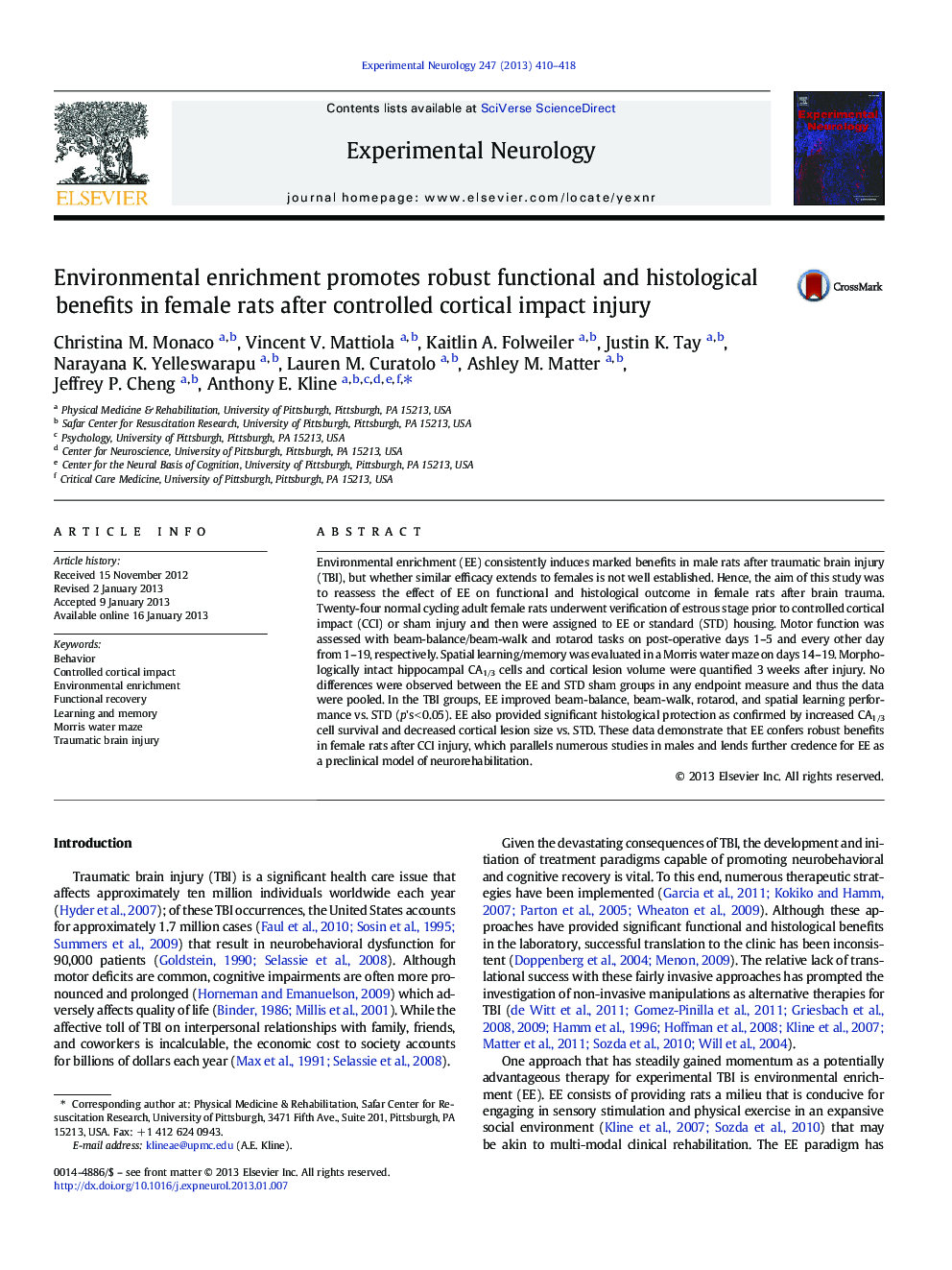| Article ID | Journal | Published Year | Pages | File Type |
|---|---|---|---|---|
| 6018314 | Experimental Neurology | 2013 | 9 Pages |
Environmental enrichment (EE) consistently induces marked benefits in male rats after traumatic brain injury (TBI), but whether similar efficacy extends to females is not well established. Hence, the aim of this study was to reassess the effect of EE on functional and histological outcome in female rats after brain trauma. Twenty-four normal cycling adult female rats underwent verification of estrous stage prior to controlled cortical impact (CCI) or sham injury and then were assigned to EE or standard (STD) housing. Motor function was assessed with beam-balance/beam-walk and rotarod tasks on post-operative days 1-5 and every other day from 1-19, respectively. Spatial learning/memory was evaluated in a Morris water maze on days 14-19. Morphologically intact hippocampal CA1/3 cells and cortical lesion volume were quantified 3 weeks after injury. No differences were observed between the EE and STD sham groups in any endpoint measure and thus the data were pooled. In the TBI groups, EE improved beam-balance, beam-walk, rotarod, and spatial learning performance vs. STD (p's < 0.05). EE also provided significant histological protection as confirmed by increased CA1/3 cell survival and decreased cortical lesion size vs. STD. These data demonstrate that EE confers robust benefits in female rats after CCI injury, which parallels numerous studies in males and lends further credence for EE as a preclinical model of neurorehabilitation.
⺠Environmental enrichment (EE) produces robust cognitive benefits after experimental TBI in female rats. ⺠EE significantly enhances motor performance after TBI in female rats. ⺠EE confers significant protection of hippocampal cell loss and lesion volume. ⺠These findings parallel those seen in males and provide further support for EE as a pre-clinical model of rehabilitation.
